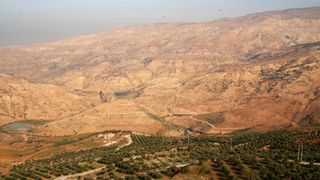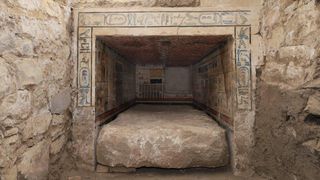
Owen Jarus
Owen Jarus is a regular contributor to Live Science who writes about archaeology and humans' past. He has also written for The Independent (UK), The Canadian Press (CP) and The Associated Press (AP), among others. Owen has a bachelor of arts degree from the University of Toronto and a journalism degree from Ryerson University.
Latest articles by Owen Jarus
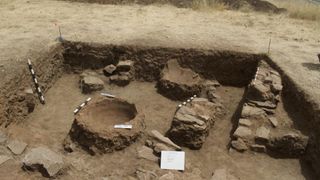
Ancient 'military outpost' in North Macedonia might be birthplace of Alexander the Great's grandmother
By Owen Jarus published
Remains of what may be the ancient capital city of the Kingdom of Lyncestis have been found in North Macedonia.
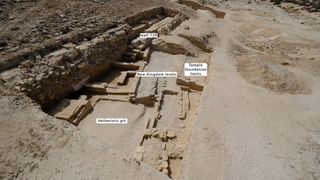
'Major' ancient Egyptian town discovered — and it has a jug stamped with the name of Nefertiti's daughter
By Owen Jarus published
A settlement dating back around 3,400 years has been discovered near the Mediterranean Sea in Egypt.
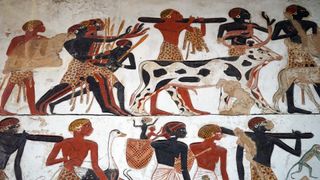
4,000-year-old burial of elite woman with ostrich fan reveals world's oldest known evidence of head straps
By Owen Jarus published
Around 4,000 years ago, women in Nubia were using tumplines, a form of head strap, to carry around goods and young children.
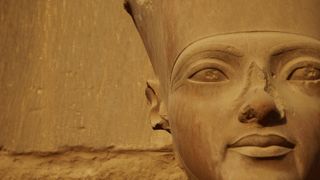
Ancient Egypt: History, dynasties, religion and writing
By Owen Jarus published
The rich history of ancient Egypt involves power struggles, amazing feats of engineering, advances in writing and art, and more.
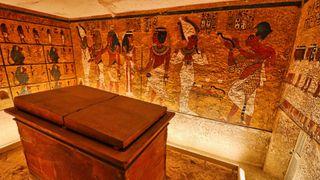
Mysterious artifacts from King Tut's tomb might have been used in 'awakening Osiris' ritual
By Owen Jarus published
Four trays and four staff found in Tutankhamun's burial chamber in the Valley of the Kings may have been used in an ancient Egyptian ritual, a new paper finds.
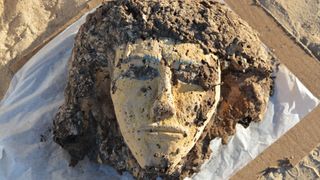
Ancient Egyptian pyramids, thought to contain only the elite, may also hold low-class laborers
By Owen Jarus published
At the site of Tombos, archaeologists have found that less-affluent laborers may be buried with upper-class people in pyramid tombs.
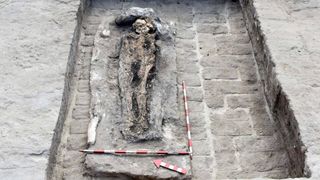
3,200-year-old Egyptian tomb may belong to military commander who served under Ramesses III
By Owen Jarus published
The ancient Egyptian tomb holds the remains of a man with a gold ring bearing the name of Ramesses III.
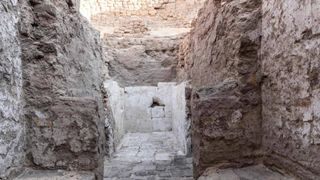
'Not enough survives to read the king's name': Tomb discovered of unknown ancient Egyptian pharaoh
By Owen Jarus published
A king's tomb dating back around 3,600 years has been discovered at Abydos, Egypt.
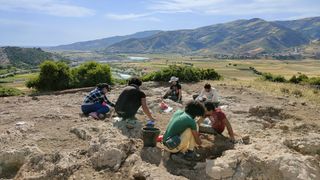
Northwestern Morocco was inhabited long before the Phoenicians arrived, 4,200-year-old settlement reveals
By Owen Jarus published
An archaeological site in the area dates back about 4,200 years.

Was medieval armor bulletproof?
By Owen Jarus published
The metal suits worn by knights during the Middle Ages were originally designed to protect against weapons such as swords. But could medieval armor also stop bullets?
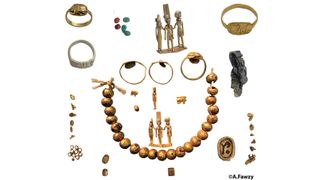
2,600-year-old jewelry stash from ancient Egypt includes gold statuette depicting family of gods
By Owen Jarus published
Archaeologists have found a hoard of 2,600-year-old jewelry at Karnak Temple in Egypt.
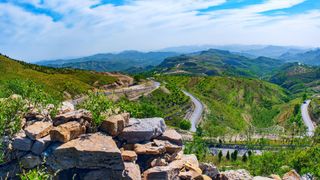
Fortifications older than the Great Wall of China discovered in Chinese mountain pass
By Owen Jarus published
A 2,800-year-old fortified wall has been found in a narrow mountain pass in China.
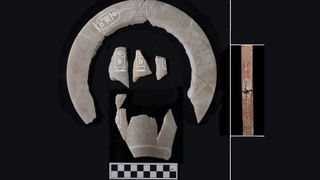
Thutmose II tomb discovery raises new mysteries: Where is his mummy, and why wasn't he buried in the Valley of the Kings?
By Owen Jarus published
Why did Hatshepsut have her husband buried to the west of the Valley of the Kings, while she was buried in the valley itself?
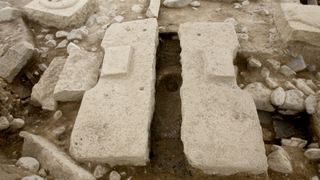
1,300-year-old royal flush toilet used by crown prince discovered at palace in Korea
By Owen Jarus published
Excavations at a centuries-old royal palace in Korea have revealed multiple flush toilets, including one that the crown prince likely used.

Tomb of ancient Egyptian pharaoh is 1st to be discovered in 100 years
By Owen Jarus published
The tomb of Thutmose II, a pharaoh who ruled about 3,500 years ago, has been discovered west of the Valley of the Kings.
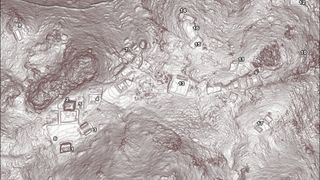
Lasers reveal 15th-century fortified Zapotec city in Mexico
By Owen Jarus published
Lidar has fully revealed a 600-year-old Zapotec city in southern Mexico.
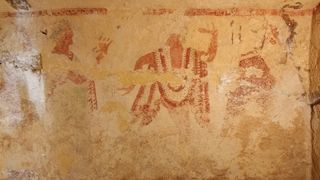
2,500-year-old painted tomb with 'unique scene of smithy' discovered at Etruscan necropolis in Italy
By Owen Jarus published
Archaeologists in Italy have discovered a 2,500-year-old Etruscan tomb that is richly decorated with wall paintings.
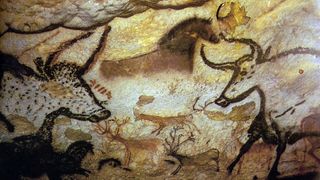
7 haunting caves ancient humans used for art, burials and butchering
By Owen Jarus published
From stunning artwork to evidence of elaborate prehistoric butchering, Live Science takes a look at seven amazing caves that contain archaeological remains.

How did Alexander the Great die?
By Owen Jarus published
Alexander the Great died at age 32, but his cause of death is unclear. What killed him has been a long-standing source of debate.
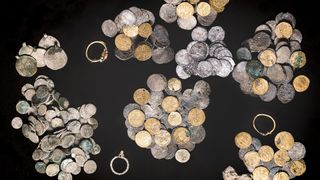
15th-century hoard of gold and silver coins discovered in Israel near Sea of Galilee
By Owen Jarus published
A coin hoard dating to the 15th century has been discovered near a medieval synagogue in Israel. Why it was deposited there, however, is a mystery.

More than 1,300 coins buried during Roman emperor Nero's reign found in England
By Owen Jarus published
A hoard of 1,368 coins, most of them silver, was discovered in England. Why they were buried is a mystery.
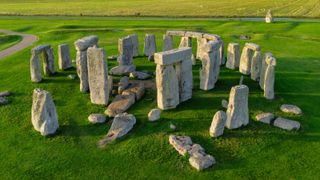
7 ancient megaliths around the world that rival Stonehenge
By Owen Jarus published
There are many megaliths around the world, some of which rival Stonehenge for their size and age.
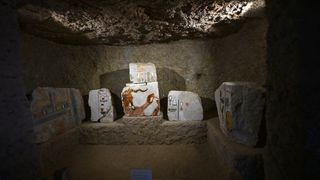
Excavations at Queen Hatshepsut's mortuary temple reveal elaborate burials, decorated blocks and ancient tools
By Owen Jarus published
A number of new discoveries have been made near the mortuary temple of Queen Hatshepsut in Egypt.
Get the world’s most fascinating discoveries delivered straight to your inbox.
